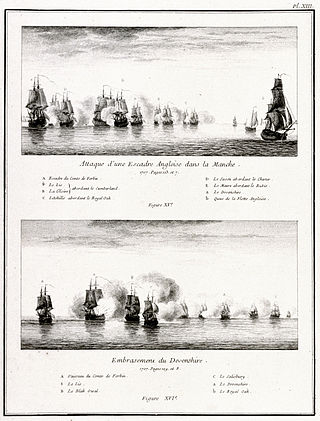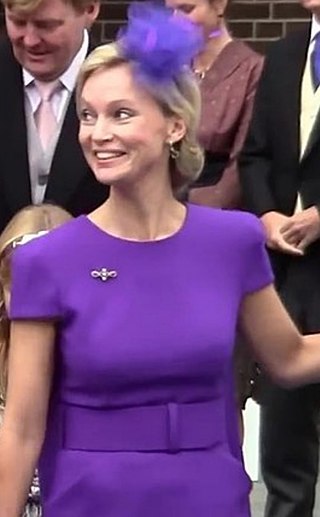This is a list of Royal Navy ship names starting with the letters O, P and Q.
This is a list of Royal Navy ship names starting with the letters O, P and Q.

Alfred was the sovereign duke of Saxe-Coburg and Gotha from 1893 to 1900. He was the second son and fourth child of Queen Victoria and Prince Albert. He was known as the Duke of Edinburgh from 1866 until he succeeded his paternal uncle Ernest II as the reigning Duke of Saxe-Coburg and Gotha in the German Empire.
HMS Leeds Castle (P258) was a Castle-class patrol vessel built by Hall, Russell & Company of Aberdeen, Scotland for the Royal Navy. She was launched in October 1980 and commissioned the following August. She was involved in the 1982 Falklands War, operating between the British territories of Ascension Island, South Georgia, and the Falkland Islands as a dispatch vessel commanded by Lieutenant-Commander Colin Hamilton.

Admiral of the Fleet Edward Russell, 1st Earl of Orford, PC was a Royal Navy officer and politician. After serving as a junior officer at the Battle of Solebay during the Third Anglo-Dutch War, he served as a captain in the Mediterranean Sea in operations against the Barbary pirates.

Royal Navy Dockyards were state-owned harbour facilities where ships of the Royal Navy were built, based, repaired and refitted. Until the mid-19th century the Royal Dockyards were the largest industrial complexes in Britain.

Admiral of the Fleet George Byng, 1st Viscount Torrington,, of Southill Park in Bedfordshire, was a Royal Navy officer and statesman. While still a lieutenant, he delivered a letter from various captains to Prince William of Orange, who had just landed at Torbay, assuring the Prince of the captains' support; the Prince gave Byng a response which ultimately led to the Royal Navy switching allegiance to the Prince and the Glorious Revolution of November 1688.

The Royal Naval Auxiliary Service (RNXS) was a uniformed, unarmed, civilian volunteer service, administered and trained by the Royal Navy to operate in the ports and anchorages of the United Kingdom in an emergency. Although the abbreviated title would logically have been RNAS this abbreviation had long been taken by the various Royal Naval Air Stations, so RNXS it was. It maintained training units, and vessels at most major ports in the UK. and was formed in 1963 from the amalgamation of the Royal Naval Mine-watching Service (RNMWS) and Admiralty Ferry Crew Association in response to the perceived nuclear threat to British ports. The service was disbanded on 31 March 1994 due to Ministry of Defence (MOD) cuts. Most vessels from its fleet were transferred to the Royal Navy or sold, with the exception of XSV Loyal Volunteer, which was struck by a ro-ro ferry while berthed in Ipswich Harbour and was later scrapped.
HMS Porlock Bay was a Bay-class anti-aircraft frigate of the British Royal Navy, named for Porlock Bay on the northern coast of Somerset. Commissioned in 1946, she served on the American and West Indies Station and as a Fisheries Protection Vessel before being put into reserve in 1949. She was sold to Finland in 1962 and served as the training ship Matti Kurki until 1974.

Princess Margarita Maria Beatrix of Bourbon-Parma, Countess of Colorno, is the eldest daughter of Princess Irene of the Netherlands and Carlos Hugo, Duke of Parma. She is a member of the House of Bourbon-Parma as well an extended member of the Dutch royal family. Per a 1996 royal decree issued by Queen Beatrix, she is entitled to the style and title Her Royal HighnessPrincess Margarita de Bourbon de Parme in The Netherlands as a member of the extended royal family.

HMS Puma (F34), was a Leopard-class, anti aircraft frigate of the British Royal Navy, named after the puma. Envisioned in late World War II, the class was designed to provide anti-aircraft escort to convoys and light fleet aircraft carriers of the Sydney and Virkant classes and to act as light destroyers on detached duties.
HMS Padstow Bay was a Bay-class anti-aircraft frigate of the British Royal Navy, named for Padstow Bay on the northern coast of Cornwall. Commissioned in 1946, she served on the American and West Indies Station only until 1947 before being put into reserve, and then sold for scrapping in 1959.
The admiral-superintendent was the Royal Navy officer in command of a larger Naval Dockyard. Portsmouth, Devonport and Chatham all had admiral-superintendents, as did some other dockyards in the United Kingdom and abroad at certain times. The admiral-superintendent usually held the rank of rear-admiral. His deputy was the captain of the dockyard.

His Majesty's Naval Base, Devonport is one of three operating bases in the United Kingdom for the Royal Navy and is the sole nuclear repair and refuelling facility for the Royal Navy. The largest naval base in Western Europe, HMNB Devonport is located in Devonport, in the west of the city of Plymouth, England.

HMS Salisbury was a 50-gun fourth rate ship of the line of the Royal Navy, built by Richard and James Herring at Baileys Hard on the Beaulieu River in Hampshire, England and launched on 18 April 1698.

Princess Maria Carolina Christina of Bourbon-Parma, Marchioness of Sala, is the fourth and youngest child of Princess Irene of the Netherlands and Carlos Hugo, Duke of Parma. She is a member of the House of Bourbon-Parma as well an extended member of the Dutch royal family. Per a 1996 royal decree issued by Queen Beatrix, she is entitled to the style and title Her Royal HighnessPrincess Maria Carolina de Bourbon de Parme in The Netherlands as a member of the extended royal family.
The 1719 Establishment was a set of mandatory requirements governing the construction of all Royal Navy warships capable of carrying more than 20 naval long guns. It was designed to bring economies of scale through uniform vessel design, and ensure a degree of certainty about vessel capability once at sea, and was applied to all vessels from the first-rate to the fifth-rate. Once in effect, it superseded the 1706 Establishment, which had specified major dimensions for ships of the second-rate, third-rate and fourth-rate only.

HMS Princess Beatrix was a commando troop ship of the Royal Navy during the Second World War. Built as a civilian passenger liner in 1939, she was named the MS Prinses Beatrix, after Princess Beatrix of the Netherlands, and operated by Stoomvaart Maatschappij Zeeland (SMZ) between Flushing and Harwich, along with her sister ship, MS Koningin Emma. After fleeing to Britain after the German invasion in 1940, she was requisitioned by the British Ministry of War Transport, renamed HMS Princess Beatrix and converted to a troopship at Harland and Wolff's yard in Belfast. During the war her main role was transporting British Commandos, and she participated in the Lofoten Islands Raid and the Dieppe Raid. She had the advantage of a high speed that allowed hit and run operations. Later designated as a landing ship, infantry (medium) she took part in the landings in North Africa, Sicily, Salerno, Anzio, and southern France. In 1946 Princess Beatrix was returned to her owners and continued to operate as ferry from Hook of Holland until 1969, when she was scrapped in Antwerp, Belgium.

Rear-Admiral Sir Thomas Hardy was a Royal Navy officer of the late 17th and early 18th centuries. Having joined the navy sometime before 1688, Hardy's career was supported by Captain George Churchill, whom he served as first lieutenant during the Battle of Barfleur in 1692. Promoted to captain in 1693, Hardy served in the Channel Islands and off the coast of England until 1702 when he was given command of HMS Pembroke off the coast of Spain. He fought at the Battle of Cádiz, and subsequently discovered the location of the Franco-Spanish fleet through the intervention of his chaplain, which resulted in the Battle of Vigo Bay. Hardy was knighted for his services.